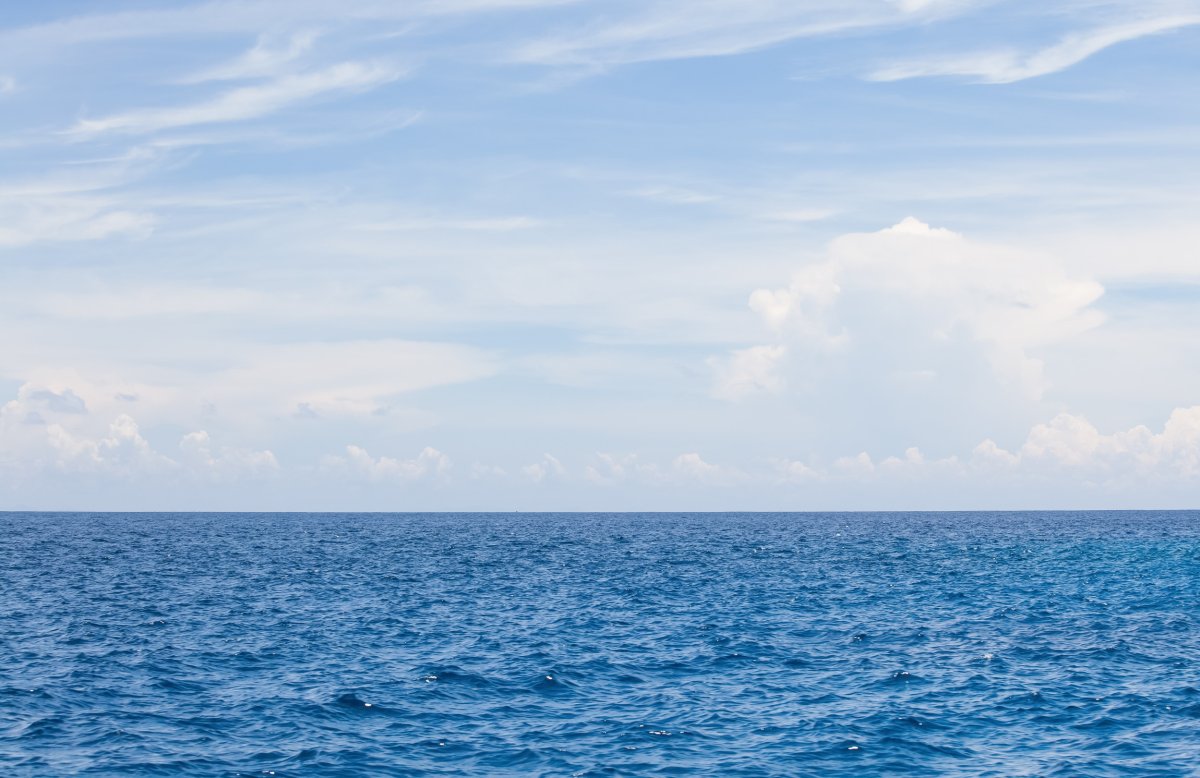Global warming is causing the word's oceans to heat up—a process that can be observed in almost all regions of the planet.
However, one stretch of water known as the "equatorial cold tongue" appears to be bucking this trend. Located along the equator stretching from Peru far into the western Pacific, the cold tongue is kept cool by trade winds in the region which carry warm water away from the surface, encouraging chillier water to rise up from the depths.
"The trade winds blow from east to west across the tropical Pacific Ocean," Richard Seager from the Lamont-Doherty Earth Observatory at Columbia University, told Newsweek. "Because of the rotation of the Earth, the winds drives waters northward to the north of the Equator and southward to the south of the Equator. As the waters are driven away from the Equator water is pumped up from below and since the waters below the surface are cold this creates the equatorial Pacific cold tongue."
Despite the effect of these winds, the cold tongue has long puzzled scientists because advanced climate computer models suggest that the waters should have been warming for decades at a faster rate than the rest of the Pacific due to rising greenhouse gas emissions. This contrasts with data showing that temperatures there have stayed relatively low and stable.
Now, a team of researchers led by Seager, has published the results of a study in the journal Nature Climate Change which shows how the observed behavior of the cold tongue can be consistent with global warming models.
"The mismatch between observed changes in cold tongue temperature over past decades and the models is quite striking," Seager said in a statement. "The average or median model says the cold tongue should have warmed by 0.8 degrees Celsius or more over the past six decades, but the real value is only 0.4 degrees Celsius or less."
The scientists also think they may have unraveled the mystery of why the climate models were not matching with the real-life observations.
"Through multiple model generations, climate models have simulated cold tongues that are too cold and which extend too far west," Seager said. "These over-developed cold tongues in the models lead to equatorial environments that have too high relative humidity and too low wind speeds. These make the sea surface temperature very sensitive to rising greenhouse gases. Hence the model cold tongues warm a lot over the past decades."
"In the real world, the sensitivity is lower and, in fact, some of heat added by rising greenhouse gases is offset by the upwelling of cool water from below," he said. "Thus the real-world cold tongue warms less than the waters over the tropical west Pacific or off the equator to the north and south. This pattern of sea-surface temperature change then causes the trade winds to strengthen, which lifts the cold subsurface water upward, further cooling the cold tongue."
For the study, the researchers actually used much more simple climate models than the complex, state-of-the-art ones which are common today. These showed that the cold tongue would not respond to global warming in the same way as other stretches of water.
The authors say that the study has several important implications for climate modelling. This is because the cold tongue plays a highly important role in determining the global climate, influencing phenomena such as the El Niño-Southern Oscillation (ENSO)—a periodic fluctuation in sea surface temperature and air pressure of the atmosphere in equatorial regions of the Pacific—which has a significant part to play in dictating the weather around the world.
"We know from El Niño that variations in cold tongue sea surface temperature (SST) drive variations in global climate," Seager told Newsweek. "Relatively cool SSTs in the cold tongue favor, for example, dry conditions in southwest North America, East Africa, southeast South America, but wet conditions in northern South America. Projections with state-of-the-art models of precipitation changes in these regions in response to rising greenhouse gases will be in error because those models have wrong changes in SSTs in the cold tongue region."
As a result of the study, Seager recommends that scientists should not limit themselves to using complex models when making climate assessments while also being wary of the inherent flaws in the systems that they use.
This article was updated to include additional comments from Richard Seager.

Uncommon Knowledge
Newsweek is committed to challenging conventional wisdom and finding connections in the search for common ground.
Newsweek is committed to challenging conventional wisdom and finding connections in the search for common ground.
About the writer
Aristos is a Newsweek science reporter with the London, U.K., bureau. He reports on science and health topics, including; animal, ... Read more
To read how Newsweek uses AI as a newsroom tool, Click here.








